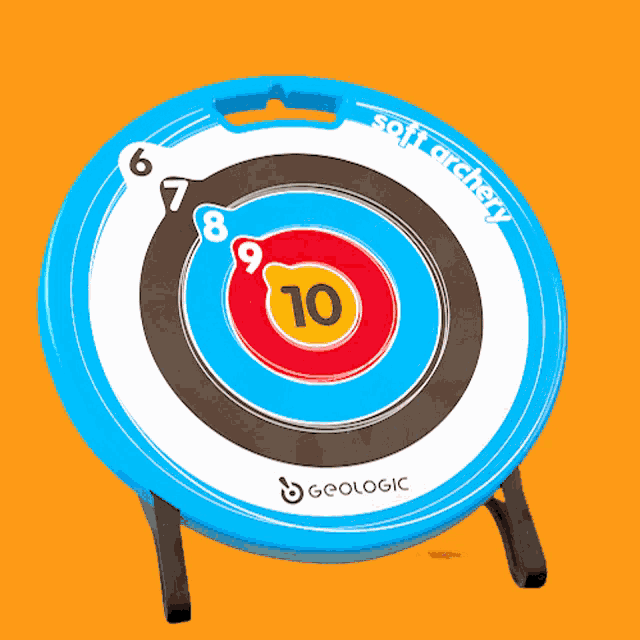How to create the perfect target audience portrait for your online store
-
Anton Koval
Copywriter Elbuz
Why does your sales work? Buyers are like unknown heroes on the pages of a book. But what if this novel was written by you? Today we'll talk about how to understand your customers down to the smallest detail, creating a portrait of your target audience, and why this is vital to the success of your online store audience. Let's take a look at some examples and practical tips.

Glossary
- 🎯 Target Audience (TA): The group of people to whom the product or service is targeted. The target audience may vary in age, gender, income, interests and other characteristics.
- 🗃️ Portrait of the target audience: A detailed description of a typical representative of the target audience, including demographic, psychographic and behavioral characteristics.
- 📊 Demographics: Information about the age group, gender, income, education level and marital status of the target audience.
- 💭 Psychographics: Information about the habits, values, interests and lifestyle of a typical customer.
- 🛍️ Behavioral data: Information about buyer behavior, such as what they buy, how they make decisions, what problems they solve with the product.
- 👥 Persona (personalization): A fictional image of a typical representative of the target audience, created based on collected data.
- 🏷️ Client avatar: Description of the ideal client, a symbol of the IDEAL representative of the target audience.
- 📈 Market segmentation: The process of dividing a broad market into smaller groups of consumers with common characteristics and needs.
- 🔍 Marketing research: The process of collecting and analyzing data about the market and target audience to make strategic decisions.
- 🎯 Positioning: A technique for determining the place of a product or service in the minds of consumers relative to competitors.
- 💡 Penetration into the psyche (insight): Deep understanding of the motivations and desires of the target audience.
- 📌 Promotion channels: Means and platforms through which the seller interacts with the target audience (for example, social networks, email newsletters).
- 📝 Content Strategy: A plan for creating and managing content aimed at attracting and retaining your target audience.
- 📉 Conversion: Turning a visitor or potential client into an actual buyer.
- 🖥️ CRM (customer relationship management): A system that helps manage interactions with current and potential customers.
- 📊 Analytics: The process of researching data to understand target audiences and monitor the effectiveness of marketing efforts.
- 🛒 Buying process: The stages a customer goes through from recognizing a problem to purchasing a product or service.
Understanding the client profile
I remember the first time I was faced with the need to create a portrait of the target audience for my online store. Then I realized that a successful business must understand its customers in such detail, as if they were close friends. Let's figure out what this tool is, how to put it together correctly, and why it is so important for your business. 
🚀 Main characteristics of a client portrait
For my online store, I created a client portrait, by including the following key elements:
- 🌍 Age. It is very important to know the age groups of your customers, as preferences change over the years.
- 🚻 Paul. Different products may be popular among men and women.
- 🏡 Place of residence. This helps to understand the economic situation and cultural characteristics of the region.
- 💍 Marital status and number of children. Knowing family characteristics helps to offer suitable products and services.
- 💰 Sphere of employment and salary level. These factors influence purchasing power and price preferences.
- 📈 Position and related problems. The higher the position, the more responsibility and, accordingly, specific needs.
- 💬 Needs, desires, phobias. This allows you to create an emotional connection and better meet customer needs.
To understand my customers even better, I further analyzed behavioral data: which pages they visit most often, which products they linger on, and what actions they take on the site.
🧠 Analysis of demographic and social factors
I would advise you to pay attention to not only demographic factors, but also social factors such as marital status and social status. For example, knowing that a significant portion of your customers are new parents, you can develop products and campaigns tailored to their needs. This means that it will be useful for them to promote not only products for children, but also solutions that make life easier for parents.

🤔 Behavioral Aspects of Consumers and Their Impact on Marketing
It is also important to consider behavioral aspects. For example, if you notice that your customers often buy gift baskets around the holidays, you might want to consider running a special promotion for each major event. I believe that behavioral data can serve as a valuable resource for setting up advertising campaigns and optimizing the service.
🌱 Example from my practice
When I first developed a portrait of the target audience, my sales in the online store increased significantly. I analyzed the needs of the targeted segment, identified pain points and adapted the range to suit real people. As a result, clients began to return because my offerings met their expectations exactly.
📋 Universal client portrait template
Here is one of the universal templates that I used:
| Characteristics | Examples |
|---|---|
| Age | 25-45 years |
| Gender | Female |
| Place of residence | City with a population of more than 500 thousand inhabitants |
| Marital status | Married, 1-2 children |
| Field of employment | Office worker, average salary |
| Position | Middle manager |
| Problems | Lack of time, high workload |
| Desires | Convenience, quality, status |
| Phobias | Overpayments, unreliability of the product |

🔍 The importance of a practical approach
I believe that creating an accurate customer persona will help you better understand your target audience. This will help you not only increase conversions, but also build longer-term and more effective marketing strategies. I strongly encourage you to use this data in all your marketing and product decisions. It will take time and effort, but the results will not disappoint you.
Every time I create a new portrait of the target audience, I immerse myself in the world of these people, their needs and problems. I am confident that only a complete and in-depth data analysis will allow me to provide the best service and relevant products.
🛠️ Best practices and tips:
| Useful | Worth Avoiding |
|---|---|
| 🌟Demographic Data Analysis | ❌Ignoring behavioral factors |
| 📊Taking into account social aspects | ❌Superficial needs analysis |
| 🎯Constantly updating your portrait | ❌Staying on old data for too long |
| 🛒Emphasis on behavioral data | ❌Reliance only on demographics |
I must urge you to pay attention to your target audience and consider the recommendations above. I am confident that this approach will allow you to achieve significant success in your business.

Examples of target audience segments
Example 1. Buyers of healthy cereals for weight loss
When I was creating a portrait of the target audience for a healthy food product, I sought to understand the interests and motivations of our potential customers. One such example is Irina Petrovna.
Irina Petrovna, 43 years old, lives in Kyiv. She is married and has two teenage children. He works as a chief accountant in the financial sector and earns about 15 thousand hryvnia per month. Her work takes a lot of time (about 12 hours a day), which is why she often does not have time to eat properly and uses food delivery to the office. Working out on weekends did not give the desired effect, and Anna began to look for an opportunity to switch to proper nutrition in order to control her weight.
Once I realized the challenges and needs Irina was facing, I decided to offer her a 14-day course of healthy cereal consumption. This course would help her change her eating habits and lose weight. Irina appreciated the idea and readily began using our product.

After implementing this approach, it became clear that the key to successful marketing was detailed knowledge of the needs and problems of the target audience. I am confident that such analysis and personalized solutions significantly increase the chances of successful sales.
| Useful Practices | Do's and Don'ts |
|---|---|
| Understanding customer needs | Ignoring customer problems |
| Personalized offers | Universal approaches for all clients |
| Constant communication with the client | One-time communications |
| Detailed analysis of customer behavior | Lack of detailed analysis |
Example 2: Buyers of premium smartphones
Another example from my practice is related to the segment of buyers of expensive smartphones. Here I will tell you about our client Oleg.
Oleg, 27 years old, lives in Zhitomir, unmarried. He has his own small business producing budget furniture, his income is about 51 thousand hryvnia per month. In his work, he needs to have a high-status smartphone for negotiations with suppliers and clients, so he considers only the flagships of leading brands and is ready to purchase expensive accessories made from natural materials, such as leather and semi-precious stones.

When I worked with Oleg’s profile, I realized that it is important to focus on the status and high quality of the product. We offered him only models from top brands, complemented by luxurious accessories.
Oleg was delighted with this approach and appreciated our careful work in selecting personalized offers. I can confidently say that this experience has once again proven: an individual approach to each client brings the best results.
| Useful Practices | Do's and Don'ts |
|---|---|
| Thorough analysis of customer needs | Offering random products |
| Personalized approach | Neglect of the client's individuality |
| Use of quality materials | Offering average quality products |
| Talking about status and image | Ignoring client status |

Example 3: Custom Jewelry Buyers
Now let's look at the example of a custom jewelry buyer. I was doing a portrait of a client named Marina.
Marina, 27 years old, lives in Uzhgorod, married. Works as a manager and receives a higher education as an economist by correspondence. Her salary is about 12 thousand hryvnia per month. Her area of employment includes working with clients, and due to her low workload, Marina strives to stand out among her peers. She loves beautiful and unique jewelry, so she purchases handmade, custom jewelry. She loves that these pieces only exist in one piece, and she loves showing off her new pieces to her colleagues.

As I worked to understand Marina's needs, I focused on the individuality and uniqueness of each piece. We offered her specially created jewelry that emphasized her style and difference from others. Marina was delighted with the result. She appreciated our creative work and continued to order custom jewelry.
| Useful Practices | Do's and Don'ts |
|---|---|
| Custom design | Mass product offering |
| Emphasis on uniqueness and handmade work | Neglect of the client's uniqueness |
| Emphasizing the client's individuality | Universal approach to everyone |
| Open communications with the client | One-sided offers |
To sum up, I can confidently say that detailed analysis and understanding of the client's needs plays a key role in successful sales. I recommend that online store owners always listen to their customers and provide solutions that solve specific problems and meet individual needs.

The importance of creating an accurate portrait of your target audience
Despite technologies and algorithms, the importance of the human factor cannot be overestimated in creating a portrait of the target audience. I came across this while working on a project for an online store, when we began to realize that guessing needs was not the best way. Then I began an in-depth analysis and drawing up a portrait of the target audience, which became the key to the success of the store.
When determining the portrait of the target audience, I took into account many factors:
- 📊 Demographics: Age, gender, place of residence, income level
- 🛠 Psychographics: Lifestyle, interests, values
- 🛒 Buying behavior: Purchase frequency, favorite products, average bill, preferred payment methods

Wondering why an online store needs this, I realized that knowing your customer allows you to:
- 🎯 Create precise marketing campaigns
- 🎁 Personalize offers
- 📈 Increase conversion and customer retention
🍀 Example from my practice: I once helped create an accurate portrait of a client for an online clothing store. Based on the data, we realized that our target audience is young mothers from large cities with above-average income. After which, I proposed the launch of promotions focused on convenience and style, which increased our sales by 30%.
💡 Recommendations for creating an audience portrait:
- ✍️ Analyze current customers: Look for commonalities among those who already buy your product.
- 🔍 Study your competitors: What are they doing to attract an audience?
- 📝 Create surveys and interviews: Get direct feedback from your customers.
- 🖥 Use analytical tools: Google Analytics are great tools for data analysis.

The process of creating a portrait is a constant process of working with data and revising it as you receive it. Here are the key steps I recommend taking:
- Data Collection: Study your database, conduct surveys, use analytics.
- Analysis: Identify commonalities and patterns among your customers.
- Creating a Profile: Describe your target audience as a real person with all the relevant characteristics.
- Testing: Apply what you learn to advertising campaigns and analyze the results.
If you don't understand your customer, you can't create a product they want to buy - this is a rule that has helped me and many of my clients create successful marketing strategies.
| Table name | Description |
|---|---|
| What to do | Make decisions based on data, create an accurate and detailed portrait of the client, test hypotheses and improve results based on analytics |
| What to avoid | Work blindly, rely only on intuition, ignore feedback and analysis |
I am convinced that the correct approach to creating a portrait of the target audience will help you not only better understand your customers, but also significantly increase the efficiency of your online smartphone store.

Creating a portrait of the target audience
When When I first thought about creating a portrait of the target audience for my online store, it became obvious to me that the success of my business would depend on a deep understanding of consumers. I started looking for ways to gather the information I needed and use it as efficiently as possible. Here are the steps I took and the methods I recommend using.
Sources of information
👥 Sociological surveys and research
To begin with, I turned to sociological surveys. I remember how, even at the startup stage, I managed to find sociology students who were happy to participate in the project and help conduct research as practice. If this option is not available, there are numerous online services that can provide similar results.
🔍 Personal observations
Another important source was my own observations. Looking back, I can see how my initial assumptions and ideas that I turned into a business helped me quickly understand which social groups were most interested in my product.
💼 Consultations with professionals
I also found time to consult with successful businessmen and attend their trainings. These events not only expanded my horizons, but also provided a lot of useful information on how to better present my product and bring it to market.

📈 Marketing research
Marketing has become another key area of my work. Professional marketers helped me organize questionnaires, surveys and interviews with specific target groups. This made it possible to find out the interest in the product from the potential customers who most interested me.
🕵️ Mystery Shopping
Finally, I used the mystery shopping method. Under the guise of an ordinary client, I visited my main competitors, assessed their service and quality of goods. I also conducted similar checks at home to understand how my employees interact with clients and perform their work.
I encourage you to consider the following: detailed observations and systematic market research can significantly deepen your understanding of your target audience and increase the success of your online store.
Useful and not useful: summary table
| Method | Useful | Not useful |
|---|---|---|
| Opinion polls | ✅ Provide accurate consumer data | ❌ Expensive to conduct |
| Personal observations | ✅ Fast and accessible | ❌ Subjectivity |
| Consultations with professionals | ✅ Experience and advice from experts | ❌ Requires time and money |
| Marketing research | ✅ Data-driven plans and strategies | ❌ Dear ones in the organization |
| Mystery shopping | ✅ Honest evaluation of service and products | ❌ Can be difficult to organize without information leakage |
In conclusion, I strongly recommend integrating a variety of information collection methods. Only an integrated approach will allow you to create a truly effective portrait of your target audience and increase the conversion of your online store.

Samsung Experience
Samsung is a global technology company that specializes in manufacturing a wide range of electronics including smartphones, TVs, home appliances and more. The company's main business is the development, production and sale of high-tech products that make people's lives more comfortable and productive. 
Main goals and objectives
Company Samsung is committed to the following key goals:
- 🎯 Increasing market share in the global smartphone market
- 🎯 Increasing customer loyalty through innovation
- 🎯 Ensuring sustainable growth and increasing competitiveness
Statement of the main problem
Main task Samsung understood how to stand out in the crowded premium smartphone market and attract the attention of a paying audience, while maintaining and increasing the loyalty of existing customers.
Characteristics and interests of the target audience
The target audience of premium smartphones Samsung includes:
- Age: 25-45 years old
- Income: high level of income allowing make expensive purchases
- Education: higher education, often working in the fields of IT, business, medicine
- Interests:
- 📱 Innovative technologies and gadgets
- 📸 High-quality photography and videography
- 🌐 Increased productivity and multitasking
- 🌟 Stylish and modern device design

Key points that may be of interest to potential customers
- Performance: High-performance processors and increased capacity RAM, which ensure stable and fast operation of smartphones.
- Camera: An advanced camera with auto focus and 8K video recording, appealing to mobile photography and videography enthusiasts.
- Design: Stylish and ergonomic design with premium build materials for a sense of class and privilege.
- Eco-system: Integration with other Samsung devices such as smart watches, tablets, TVs, which adds ease of use.
Project results
🚀 Samsung was able to increase its market share by 15% in the premium segment smartphones within a year after analyzing the target audience and implementing marketing strategies aimed at it. Average customer satisfaction also increased by 20%, and repeat purchases increased by 10%.
Final data
| Indicator | Result |
|---|---|
| Increase in market share | 15% |
| Customer Satisfaction | +20% |
| Growth repeat purchases | +10% |
Understanding our target audience helped We not only need to improve our products, but also create marketing strategies that resonate with our customers. We are pleased to see such significant improvements in key metrics following the implementation of these changes. — Lee Jae-yong, South Korean businessman and billionaire, vice president of Samsung Electronics.
Thus, creating and using a portrait of the target audience turned out to be critical to achieving Samsung business goals. This is a clear example of how deep analysis and understanding of customer needs can lead to significant success.
Frequently asked questions on the topic: How to create the perfect portrait of the target audience for your online store?
What is a portrait of the target audience?
A portrait of the target audience is a detailed description of the typical client to whom your product or service is targeted. Includes demographics, behavioral characteristics and preferences.
Why does an online store need a portrait of its target audience?
Allows you to accurately target your marketing, improve customer experience, increase conversion and customer loyalty, and effectively distribute your advertising budget.
What are the key elements to consider when creating a target audience profile?
Demographic data (age, gender, income), geographic data, psychographic data (interests, hobbies) and behavioral data (shopping habits, preferences).
How to correctly create a portrait of your target audience?
Collect and analyze data about your current and potential customers through surveys, interviews, and data analytics. Consider their demographic, psychographic and behavioral characteristics.
Example customer profile: Buyers of weight loss cereal
Women 25 -45 years old, with an above-average income, interested in a healthy lifestyle, actively involved in fitness and monitoring their diet.
Example of a customer profile: Buyers of expensive smartphones
Men and women 18-35 years old, with a high income, actively using technology in everyday life, striving for novelty and status.
Example customer profiles: Buyers of custom-designed jewelry
People high income earners looking for unique and personalized gifts or accessories who value individuality and exclusivity.
Why is it necessary to create a portrait of the target audience?
It helps to accurately identify customer needs and expectations, which allows you to develop effective marketing strategies and improve products and services.
What methods can be used to create a client profile?
Surveys, interviews, CRM data analysis, social networks and analysis of user behavior on the site.
How to use a target audience portrait in practice?
Use it to set up advertising campaigns, develop a content strategy, improve customer service and tailor your product line to the needs of your audience.
Thanks for reading and for becoming more experienced! 🎉
Now you are a master of creating a portrait of your target audience. 📊 I hope you are inspired to implement this knowledge in your online store. Remember that deep understanding of your customers directly leads to success and growth. To conclude, as a concrete example, consider my project for the Elbuz company: thanks to a correctly drawn up portrait of the target audience, our client increased his sales by 45% in the first three months! Share your thoughts and comments below, dear readers!
— Anton Koval, independent expert at Elbuz

- Glossary
- Understanding the client profile
- Examples of target audience segments
- The importance of creating an accurate portrait of your target audience
- Creating a portrait of the target audience
- Samsung Experience
- Frequently asked questions on the topic: How to create the perfect portrait of the target audience for your online store?
- Thanks for reading and for becoming more experienced!
Article Target
Explain the importance of target audience personas and provide practical guidance for online retailers.
Target audience
online store owners, marketing specialists, businessmen, startups
Hashtags
Save a link to this article
Anton Koval
Copywriter ElbuzIn the world of business, words are my pencils and automation is my art. Welcome to the gallery of online store effectiveness, where every text is a masterpiece of success!
Discussion of the topic – How to create the perfect target audience portrait for your online store
A detailed description of what a portrait of the target audience is, how to draw it up correctly, and why it is so important for an online store. Key elements to consider when creating a portrait and practical tips for using it.
Latest comments
15 comments
Write a comment
Your email address will not be published. Required fields are checked *



















John Smith
Anton's post is right on point! Has anyone tried to create a portrait of the target audience for their store? Does it work? 🤔
Hans Müller
John Smith, yes, worked with this on our website, it really helps to understand what customers need and how best to present our product to them.
Marie Dubois
I agree with Hans Müller, this is simply necessary! It helps not only to sell, but also to develop products that are truly in demand.
Carlos Ruiz
Is it really that important? After all, many simply intuitively understand their audience.
Антон Коваль
Carlos Ruiz, this is really important. Intuition is a good guide, but specific data and analysis provide an accurate idea of who and how to attract. 👍
Luca Rossi
My intuition has been wrong many times. Therefore, I always rely on a portrait of the audience. Anton, what can you say about segmentation? 🤔
Антон Коваль
Luca Rossi, segmentation is the key element. It helps you focus on specific customer groups and their needs.
Alice Taylor
Anton, what criteria do you consider the most important when creating a portrait? 🙌
Антон Коваль
Alice Taylor, basic: age, gender, income, interests, problems and tasks of the client. This is the base from which to start.
Sophie Martin
John Smith, I've been wondering about this recently too. I spent a couple of weeks on analysis and development, but the results really justified the costs.
Jakub Nowak
These little things of yours with portraits are a waste of time. These are all fashion trends that quickly pass.
Антон Коваль
Jakub Nowak, your opinion also has its place. But the practical benefits of creating a portrait are visible to many.
Olena Kovalenko
Anton, what tools would you recommend for data collection?
Антон Коваль
Olena Kovalenko, Google Analytics, social networks, surveys and customer reviews are a good place to start. These are the most accessible and informative methods.
Isabel García
Olena Kovalenko, I also use behavior analysis on the site. You can often find unexpected insights.